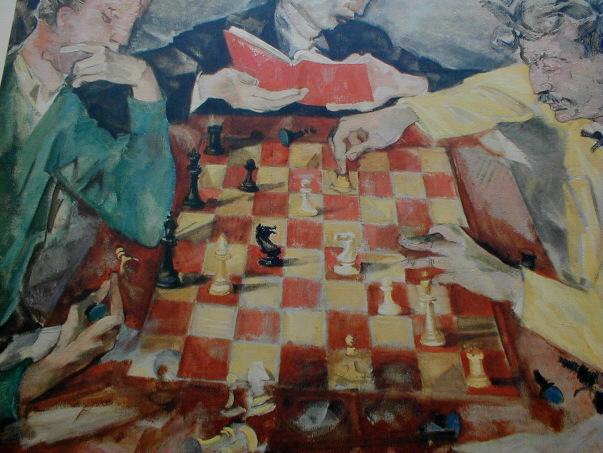Day 30 Answers to Questions
I've been asked to recently comment on a couple of things in my blog.
King of the Spill asked what I thought of the Bain Chess Tactics for Students.
I liked it very much and felt it was appropriate for my level :starting out with my tactical training. There are 14 tactical motif chapters such as back rank weaknesses,double attack, removal of the guard. I particularly found the chapters on Perpetual Check and Stalemate helpful since I have not trained on these before.
It is in the format of a grammar school workbook. Each page has two tactical problems. Here is a typical example of a problem. It shows a board position and has a to do goal: Win the White Knight in two moves and a hint: use a bishop skewer, attacking the White King and the Knight behind it.
Although some of these problems seem trivial, I believe I am improving my pattern recognition greatly. Some of the problems build of each other. They at times have a tactical position for black to move and a few problems later give the exact same position with white to move. There will also appear the same position except there is a defending knight that needs to be removed or a pawn that is blocking the way.
I think the benefits I am getting might be simalar to what you are seeing with TASC tutor. Seeing the tactical position quickly and clearly and hopefully being able to identify it even if it buried deep within a position. I also find myself needing to be careful that I am not moving too quickly and not fully evalutating the safety of my pieces after the move.
As to PSalcido asking for a discription of the Knight Flight Drill. This is a chess board vision drill that MDLM recommends in his book. One starts with the Knight on A1 and calculates all the shortest path to the B1 square. Then you calculate the Knights shortest path from A1 to C1.You proceed to do this from every square to every square. He estimates that it would take about 5 hours to do the drill in it's entirety. (which I have not come close to doing)
Note: MDLM lists this as an optional exercise in the Rapid Chess Improvement Program.
King of the Spill asked what I thought of the Bain Chess Tactics for Students.
I liked it very much and felt it was appropriate for my level :starting out with my tactical training. There are 14 tactical motif chapters such as back rank weaknesses,double attack, removal of the guard. I particularly found the chapters on Perpetual Check and Stalemate helpful since I have not trained on these before.
It is in the format of a grammar school workbook. Each page has two tactical problems. Here is a typical example of a problem. It shows a board position and has a to do goal: Win the White Knight in two moves and a hint: use a bishop skewer, attacking the White King and the Knight behind it.
Although some of these problems seem trivial, I believe I am improving my pattern recognition greatly. Some of the problems build of each other. They at times have a tactical position for black to move and a few problems later give the exact same position with white to move. There will also appear the same position except there is a defending knight that needs to be removed or a pawn that is blocking the way.
I think the benefits I am getting might be simalar to what you are seeing with TASC tutor. Seeing the tactical position quickly and clearly and hopefully being able to identify it even if it buried deep within a position. I also find myself needing to be careful that I am not moving too quickly and not fully evalutating the safety of my pieces after the move.
As to PSalcido asking for a discription of the Knight Flight Drill. This is a chess board vision drill that MDLM recommends in his book. One starts with the Knight on A1 and calculates all the shortest path to the B1 square. Then you calculate the Knights shortest path from A1 to C1.You proceed to do this from every square to every square. He estimates that it would take about 5 hours to do the drill in it's entirety. (which I have not come close to doing)
Note: MDLM lists this as an optional exercise in the Rapid Chess Improvement Program.


0 Comments:
Post a Comment
<< Home